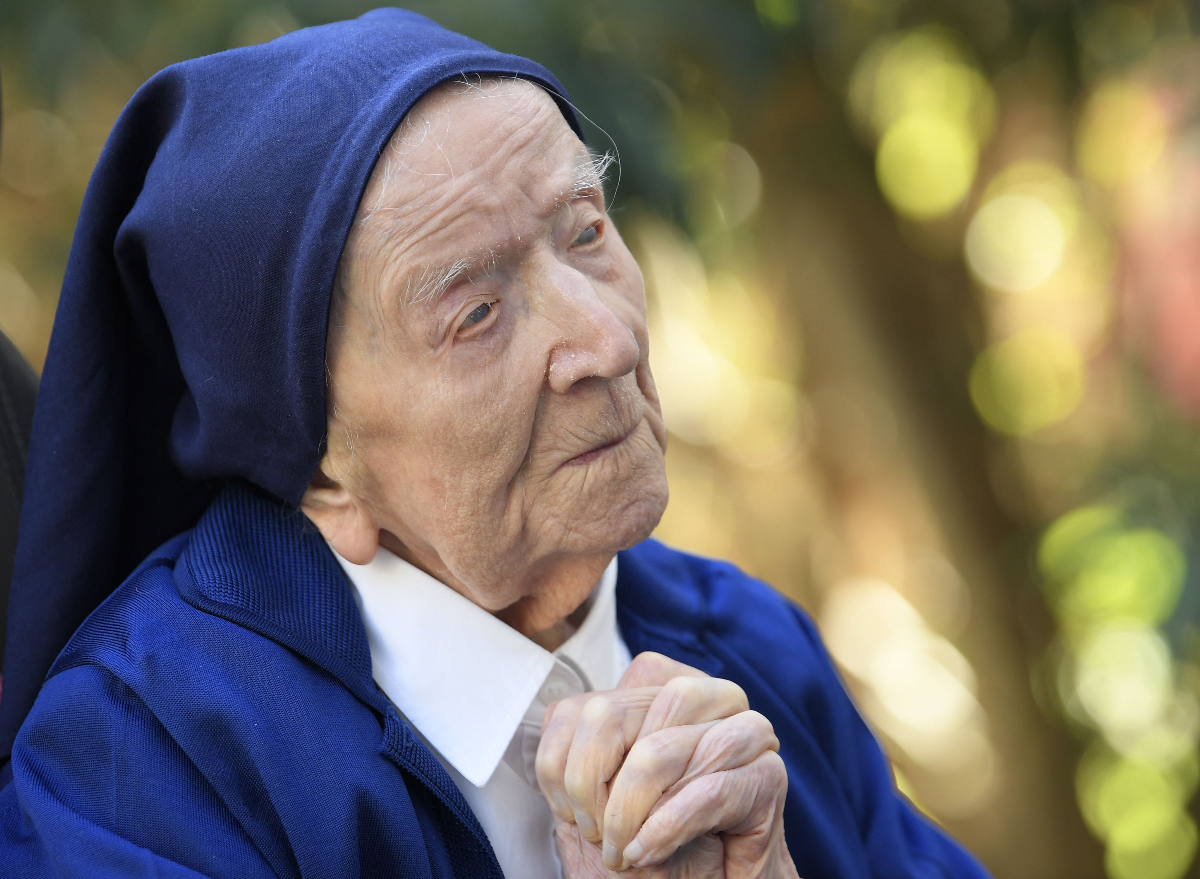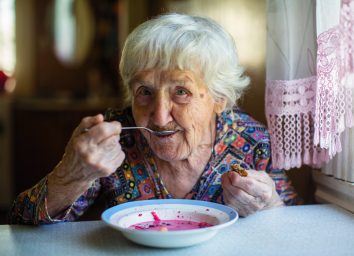Sr. André, the World's Oldest Person, Dies at Age 118—4 Eating Habits That Fueled Her Longevity
On Tuesday, January 17, 2023, Sister André, the 118-year-old nun who held the record for being the world's oldest person, reportedly died peacefully in her sleep at her nursing home in Toulon, France. André—who was born on February 11, 1904, and held the Guinness World Records for the longest-living woman and overall oldest person at the time of her death—reportedly passed away just weeks before her 119th birthday.
"It's difficult to fathom that someone born before the patenting of plastic, zips or even bras was alive well into the 21st century, and robust enough to beat COVID-19," Guinness World Record Editor-in-Chief Craig Glenday wrote of Sr. André in a heartfelt letter of condolence."Ms. Randon clearly had a bright outlook on life, claiming that her aim was to outlive fellow Frenchwoman Jean Calment, which she tackled by enjoying a daily diet of wine and chocolate. While she may not have reached quite so advanced an age as her 122-year-old counterpart, she nevertheless lived a remarkably long and varied life. It's been an honour to record her story in the pages of the Guinness World Records book, and she will live on in history as the fourth oldest person ever authenticated."
Sister André was asked about the secrets to her longevity throughout her lifetime. Although she never gave a meticulously detailed account of her daily diet during interviews, it's likely that her eating habits helped contribute to her ability to reach such an advanced age. We can all take a lesson from Sister André's life of piety and service to others, as well as the dietary principles she followed throughout her long life.
In honor of her André's long, full life, the original article about her eating habits is published below.
Eat communally.
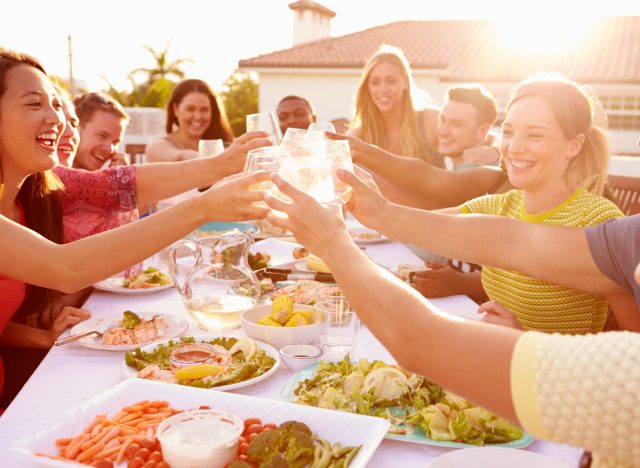
Since World War II, Sister André was a member of the Catholic order Sisters of Charity, serving orphans, the elderly, and hospital patients. One hallmark of a Catholic religious life is communal living—which extends to eating among people as well. We'd venture to guess this was one key to Sister André's long life.
Science has plenty to say about the benefits of sitting down to meals with family and friends. Research from Oxford University reveals that the more often people eat with others, the happier and more satisfied they're likely to feel. A 2013 study in the Journal of Nutrition Education and Behavior also found that, across the lifespan, eating with others was associated with a healthier diet.
Enjoying food with others is a core principle of the Mediterranean diet, too. (The French are especially famous for their leisurely communal meals). Among its many health benefits, a Mediterranean diet has been shown to improve the gut microbiome in older people, reducing frailty and boosting overall health.
Savor your favorite foods.
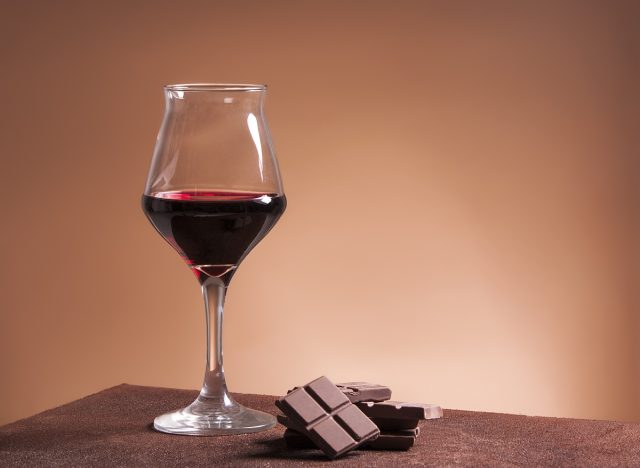
You might be surprised by Sister André's most-cited dietary choices. In fact, according to Forbes, the nun told reporters of her "guilty secret" of enjoying chocolate and wine on a regular basis.
Though these pleasures may seem "guilty," there's a lot to be said for the power of enjoying your food. Savoring food can boost mood and relieve stress—two important pieces of the longevity puzzle. After all, happiness is associated with a longer life! One study showed that people with better moods were 35% less likely to die over the course of five years.
Interestingly, Sister André wasn't the first oldest person on the planet to credit chocolate and wine for her longevity. According to the Guinness Book of World Records, the oldest person ever, fellow Frenchwoman Jeanne Louise Calment, also believed chocolate and port were essential to her long life.
Practice moderation (especially with alcohol).
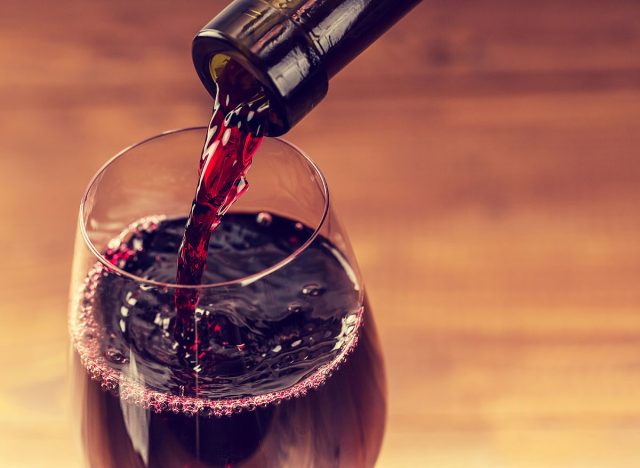
Despite Sister André's confession of imbibing alcohol, she stated that it was just one glass of wine she sipped on per day, which falls in line with the CDC guidelines for "moderate" drinking for women.
The science is mixed on alcohol's effects on longevity, but some research suggests that moderate drinking could promote a longer life. A Dutch study of over 5,000 people found that moderate wine intake was positively associated with longevity, especially in women. Binge drinking, on the other hand, reduced the lifespan. The sweet spot for reaching age 90 or older appeared to be 5-15 grams of alcohol per day. For reference, a standard drink of five ounces of wine or 12 ounces of beer contains about 14 grams of pure alcohol.
Choose foods that are high in antioxidants.
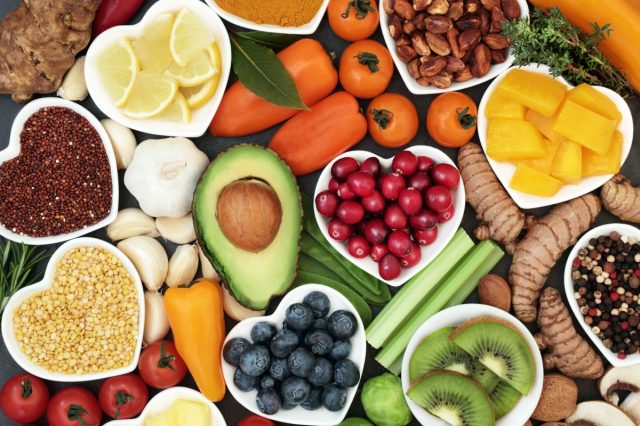
Back to chocolate and wine (we didn't think you'd mind). Sister André's two favorite foods aren't just delicious—they happen to be loaded with antioxidants. Red wine contains the antioxidant resveratrol, which might support heart health by warding off blood vessel damage, reducing harmful LDL cholesterol, and preventing blood clots. Chocolate—especially the dark variety—has numerous antioxidants that might also reduce the risk of heart disease.
In general, for a longer life, you can't go wrong by choosing nutrient-dense, high-antioxidant foods, and chocolate and wine aren't the only ones! Fruits like berries and citrus, vegetables like leafy greens and artichokes, and plant-based proteins like nuts and beans all pack a major antioxidant punch. As antioxidants dial down inflammation throughout the body, they help reduce the risk of age-related diseases. Sounds like a delicious formula for a long and healthy life.
- Source: https://link.springer.com/article/10.1007/s40750-017-0061-4
- Source: https://www.jneb.org/article/S1499-4046(13)00579-4/fulltext
- Source: https://gut.bmj.com/content/69/7/1218
- Source: https://www.pnas.org/doi/full/10.1073/pnas.1110892108
- Source: https://pubmed.ncbi.nlm.nih.gov/32037449/
- Source: https://www.niaaa.nih.gov/alcohols-effects-health/overview-alcohol-consumption/what-standard-drink
- Source: https://www.mayoclinic.org/diseases-conditions/heart-disease/in-depth/red-wine/art-20048281
- Source: https://www.hsph.harvard.edu/nutritionsource/food-features/dark-chocolate/
- Source: https://www.mdpi.com/2076-3921/10/4/507
